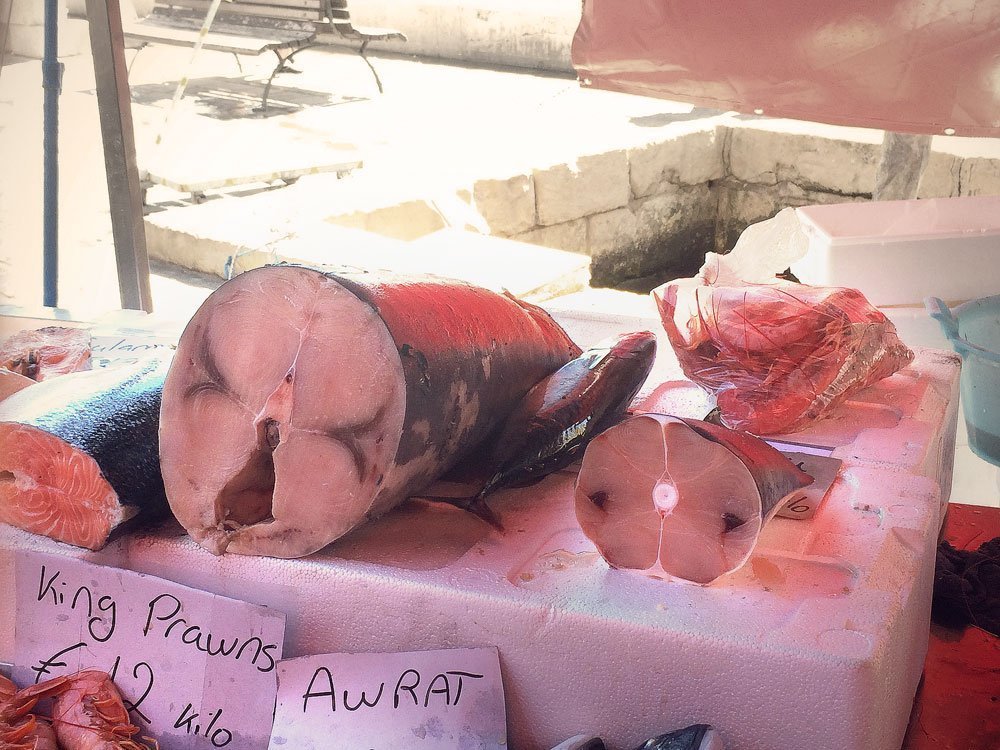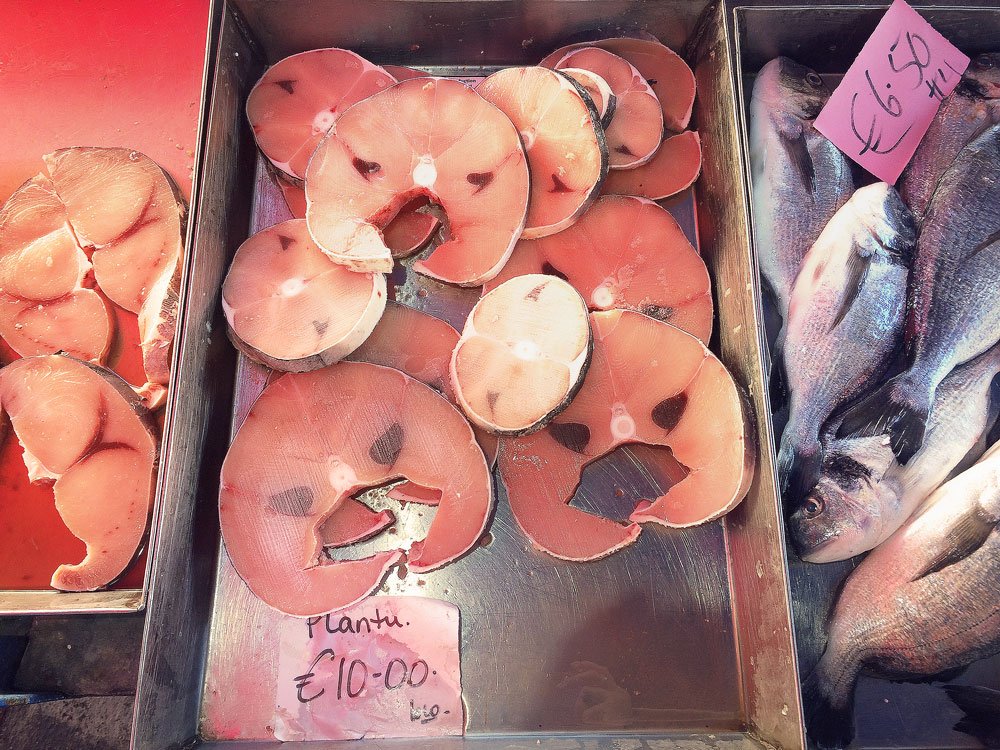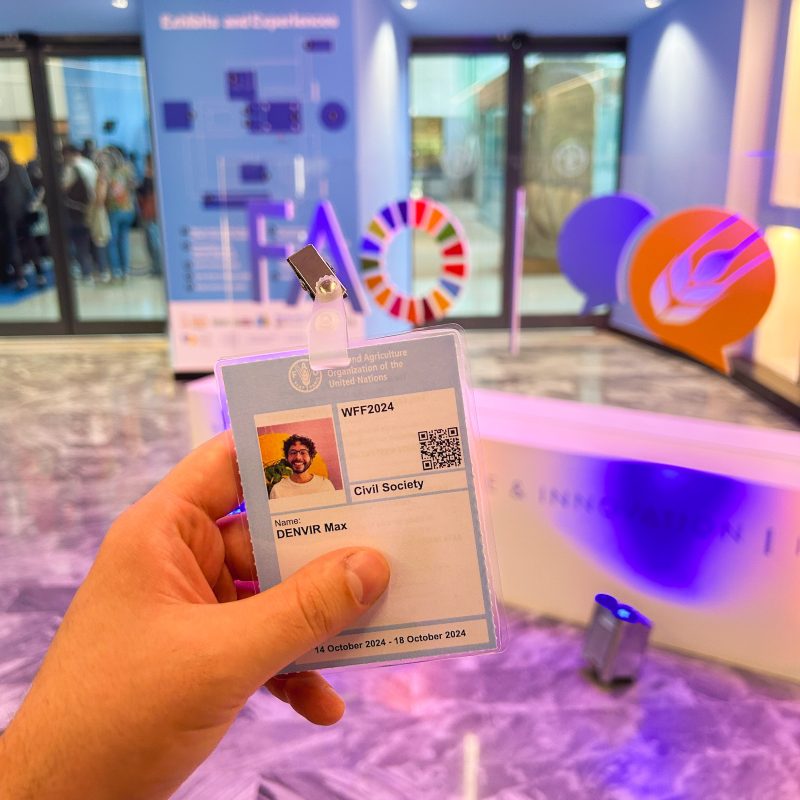Malta, Mediterranean sea, fish market.
What does shark meat taste like? I am not sure, I don’t think I have ever tried it. I don’t remember finding it in menus or at the supermarket. If any of us have tried it, I am sure we can still remember and even count the times that we did. But what if we were served it at a restaurant without knowing, or if we unintentionally bought it at the regular fish market where we like to go. According to Shark Alliance, Italy is the largest European consumer of shark meat and the fourth largest importer after Spain, Korea and Hong Kong. Many shark species are in danger of extinction and the black market for illegal shark meat and fins is growing steadily. Other species are not endangered nor illegal to commercialize so, if this is the case, how come we never see them around? Could we have eaten all the sharks to extinction without even realizing it?
Shark meat has been an ingredient in traditional cuisines all around the world. The best example is the Chinese shark fin soup, a dish that has slowly become popular in the western countries. It used to be a very expensive and exclusive meal, available to the richer people. Once China became a global economic power everybody could afford to buy shark fin soup. Trading shark fins is now the second biggest trade market in the world after the drugs trade.
“As a consequence to these trades 90% of the blue sharks in the Mediterranean have been killed. 90% is a huge number and even if there is still 10% left, it is not enough. That is why we are so passionate about studying and tracking fish arrivals at the fish markets” says Pamela Mason, a retired teacher and a member of Sharklab-Malta and fish4tomorrow. “Those sharks left are sometimes not able to find a mate and once they become extinct they are gone forever“.
We met Pamela with her husband David, who is a biochemist, lecturer, and also a member of Sharklab-Malta and fish4tomorrow, during our study trip in Malta.
“Eating sharks is fine, as long as there are plenty in the sea. It is not the best meat for a daily consumption because of the mercury traces found in all the larger game fish, such as tuna and swordfish. Many researchers are still studying the mercury traces found in larger fish; in fact in some animals they are very high and in others are not present. This could be due to different polluted areas or to the physiology of the fish itself. Either way, some species in the Mediterranean have already gone extinct. We haven’t seen some of them in 10 years now, so it is not possible that no one is eating them” Pamela continues her explanation while guiding us through the fish market.
“If you ask the people they won’t tell you that they eat sharks. In fact shark steaks are very similar to the swordfish ones and when they are sold one next to the other it is not easy to spot the difference” Pamela and David tell us.
They reported the sales of mako, a very endangered species locally, in the markets to the authorities several times but no one seems to worry about it. They tell us that mako was banned 3 years ago all over Europe, and it is not allowed to buy, catch, sell, import, or export it. Fortunately, there are still plenty of this species in the Australian and Scandinavian seas. Even though the law is very clear and states that mako cannot be imported in any European country, we still find it at the market. At this point, how can you even tell where it was caught?
Walking around, we realize that almost every vendor at the market is selling shark. The small sharks are sold without the skin so that they cannot be recognized as such, while the steaks are sold as amberjack, mazzola, swordfish or white fish.

Sword fish on the left, shark on the right
Why wouldn’t people buy the same piece of fish if they knew it came from a shark? In fact, not all sharks are endangered or illegal to fish and commercialize, yet when their meat is sold it is still not advertised accurately. Taboos or habits perhaps, but here no one seems to be hungry for shark meat.
Is this happening anywhere else? How is Italy the biggest consumer in Europe when you rarely find it on menus? What is the general consumption of shark meat in Europe and in the rest of the world?
According to the The Pew Charitable Trusts Fact Sheet, in 2004 Europe imported more than 26,000 tonnes of shark meat, which is nearly 30% of the world’s shark imports. The same year, Europe also exported more than 40,000 tonnes of shark meat, fins and other products, or just under 40% of world shark exports.
The same document declares Italy responsible for over 10% of global shark product imports, ranking third in the world for the importation of frozen, chilled and fresh shark meat and fillets of dogfish, porbeagle, smoothhounds, catsharks and makos. The most important fishing nations in the world are European. The most relevant ones are Spain, France, Portugal and the UK and almost half of the shark that they catch comes from outside European waters. Italy, however, is indicated as the european leader in catching sharks in the Mediterranean.
The main reasons sharks are caught are their fins, their meat, the liver oil, their cartilage, and their skin. With globalization, food traditions are travelling non-stop around the world, becoming fashionable and leading to increased demand in places where something would have never been eaten before. This is happening with sharks. The number of foreign restaurants serving shark dishes or shark tacos are multiplying, especially in the US.
Shark finning is illegal in many parts of the world, including Europe, however, buying and selling shark products, including fins, is legal in most countries, which is why shark fin soup regularly appears on restaurant menus and the shark market keeps expanding.
This increasing demand for shark has resulted into the overexploitation of many species. The shark fin market is definitely the main cause of the destruction of shark populations, but the lack of sustainable fishery, policies and regulations concerning this matter also allows too many animals to be caught accidentally in nets or on long-lines initially meant for other species like tuna. In the Mediterranean sea, some examples,reported in the Pew Charitable Trust Fact Sheet are mako, blue, thresher and porbeagle sharks. Currently there are no limitations on the quantities of sharks captured. This also makes it hard to track precisely what is happening and how many sharks are caught and sold. Because of this unclear situation, the populations of many species have been drastically reduced.
If all of this shark meat is often readily available in restaurants and supermarkets, why don’t we notice it? This product is rarely labelled as what it is. A common case is when you order fish and chips without specifying which fish you would like. In this situation there is a high probability that the fish you will receive is shark sold as flake fish or huss fish; it has a very similar consistency, tenderness, and whiteness.
In Italy specifically, sharks are sold as smeriglio, can bianco, cagneto, missola, pallouna, nizza, stera, cagnolo, penna, vitello di mare, gattucci, spinaroli and cani spellati; blue sharks are sold as more valuable smoothhounds (palombo) while porbeagle and mako can be found, fortunately not too often anymore, as swordfish (pesce spada). The best sellers among the listed above are palombo and gattucci.

According to the Pew Charitable Trusts document, in 2008, scientists reported that the mediterranean populations of hammerheads, threshers, porbeagles, makos and blue sharks declined by 97-99% and that the diversity of shark species in the Adriatic Sea and Gulf of Lion has been reduced to 50% over the last five decades. It goes on to say that “[m]ost Mediterranean sharks remain completely unprotected from overfishing and the only sharks to receive EU protection in the Mediterranean are basking, white and angel sharks; moreover european catches of Northeast Atlantic spiny dogfish, porbeagle and deepwater sharks are limited, but at levels above scientific advice.”
Fisheries policies around the world are very different according to the different nations, as for any other field. In fact, international seas have different regulations from European seas and this makes the Mediterranean sea vulnerable since it is shared by EU e non-EU countries. The cooperation among all countries has to be very strong making sure that the few rules concerning shark fishing are respected.
Shark’s decline impacts drastically the ecosystem. According to Shark Alliance a global shark conservation momentum has begun in 2004. It is reported on their website that: “Countries around the world worked together on an unprecedented scale to prepare for implementation of new landmark shark protections. Under these new rules, part of the Convention on International Trade in Endangered Species of Wild Fauna and Flora, global trade in sharks that are commercially exploited in large numbers is being regulated for the first time. Also governments that are part of the U.N. Convention on the Conservation of Migratory Species of Wild Animals agreed to protect 21 shark and ray species at their meeting held in Quito, Ecuador, in November 2014.”
Consciences are awakening and the right path to follow seems to be getting clearer. Let’s hope for more restrictions to prevent the threat to any other species and for laws that will worldwide ensure the consumers to be informed about what they are buying or eating, without tricks to hide the sale of illegal products.
by Alessandra Altimare





